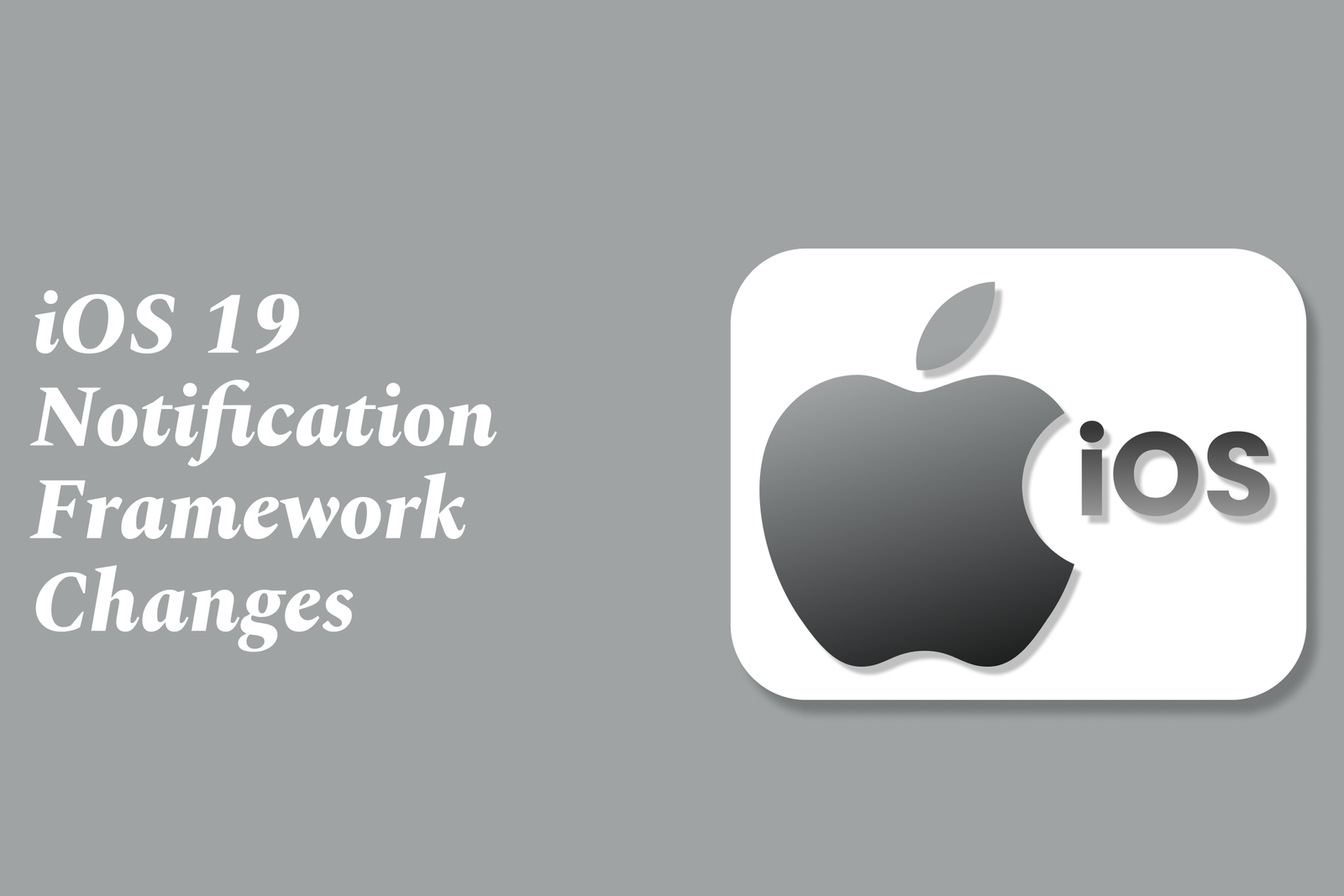Ios 19 Notification Framework Changes
iOS 19 introduces updates to the notification framework enhancing accessibility, layout control, and cross-platform consistency. Key changes include improved form input labeling, new dismissal commands, streamlined initialization, and bug fixes for better stability and user experience.
iOS 19 Notification Framework Changes
1 ) Overview of Updates
The latest updates to the Airship iOS SDK include enhancements primarily targeting the Scenes framework and JavaScript interface.
These changes focus on improving accessibility, layout control, and command functionality parity with Android.
2 ) Enhancements in Scenes
Added support for linking form inputs to labels to improve accessibility compliance.
Introduced container item alignment options, allowing developers to adjust the natural alignment within scene containers.
3 ) JavaScript Interface Improvements
A new dismiss command, `UAirship.dismiss()`, is added to mirror the behavior of Android’s `UAirship.cancel()`, enabling consistent cross platform dismissal handling.
4 ) Initialization and Setup Simplifications
Deprecated Airship.takeOff methods that rely on launchOptions for streamlined initialization.
Updated `takeOff` to be callable before the application delegate setup completes, accommodating modern app lifecycle setups.
5 ) Bug Fixes and Stability Improvements
Resolved a stack overflow issue related to using Scenes with iOS 26 beta.
Addressed crashes linked to AirshipWorkManager and AirshipChannel by implementing workarounds.
Fixed race conditions in Scene asset file operations, improving reliability in file management.
Addressed a crash caused by constraints updates when in app views were no longer in the view hierarchy.
Resolved memory inefficiencies by reducing unnecessary temporary array allocations in background work management.
Fixed user interface interaction bugs such as the need to double tap NPS survey scores.
6 ) Accessibility Upgrades
Improved VoiceOver support ensuring toggles, checkboxes, and radio inputs remain fully accessible.
Added accessibility header traits to section titles across Message Center, Preference Center, and other UI components to facilitate easier navigation for screen reader users.
7 ) Conclusion
These updates represent incremental but significant improvements to iOS notification and interaction frameworks, focusing on accessibility, developer ease of use, and platform consistency.
Developers targeting iOS 19 and iOS 26 betas should apply these updates for optimal notification experience and compatibility.
https://justacademy.in/news-detail/apple-vision-pro-sdk-launch:-ios-apps-for-xr
https://justacademy.in/news-detail/android-auto-updates-and-new-features
https://justacademy.in/news-detail/flutter-community-meetups-in-2025
https://justacademy.in/news-detail/how-react-native-is-helping-build-inclusive-apps
https://justacademy.in/news-detail/ios-19-background-tasks-api-improvements
Related Posts
Java supports GDPR and data privacy by enabling secure data handling through encryption, controlled access, and precise data management. It allows developers to minimize PII exposure, ensure data confidentiality, and design workflows that comply with data protection regulations effectively.
Java code quality tools have evolved to include advanced static analysis, integrated security checks, and AI-powered code reviews. These updates help developers detect bugs, enforce coding standards, and enhance security, streamlining the development process and improving overall code reliability.
Java remains a cornerstone in big tech companies, evolving with modern features like records, pattern matching, and virtual threads. Its robust ecosystem, enhanced performance, and growing AI integrations keep it vital for both legacy systems and innovative new projects.
Java and CI/CD pipeline optimizations streamline Java application development by automating builds, tests, and deployments. They improve efficiency through parallelization, caching, and secure secrets management, enabling faster feedback loops and more reliable, scalable software delivery.
Java supports modern cryptography standards through its flexible Java Cryptography Architecture (JCA), enabling integration of advanced algorithms like AES, EdDSA, and post-quantum tools. Libraries like Bouncy Castle offer FIPS-certified, hardware-accelerated implementations for secure development.
Java 23 enhances record patterns by enabling concise, direct destructuring of record components within pattern matching, simplifying type checks and data extraction. This improvement boosts code readability and expressiveness by reducing boilerplate in handling immutable data classes.
Java remains a top choice for mobile app backends, powering scalable, secure, and high-performance server-side solutions. Latest trends include cloud-native microservices, reactive programming, and enhanced JVM optimizations, enabling efficient, flexible, and robust mobile backend development.
Java SE 24 and LTS Java SE 21 offer enhanced features and performance, while Apache Spark 4.0.0 introduces Scala 2.13 support and advanced ML and SQL capabilities. Together, they empower developers to build scalable, high-performance data applications with modern tools.
JUnit 5 modernizes Java testing with a modular architecture, improved assertions, and seamless Java 8+ support. Beyond JUnit, tools like Mockito and AssertJ enhance mocking and assertions, creating a powerful, flexible ecosystem for writing clean, efficient Java unit tests.
Java plays a pivotal role in cloud automation tools by providing a robust, platform-independent language used to build scalable automation frameworks like Jenkins and Selenium, enabling efficient CI/CD pipelines, testing, and orchestration across diverse cloud environments.










